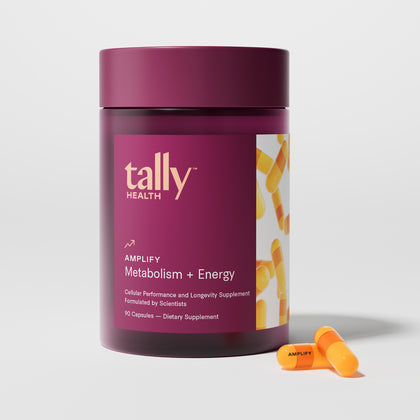

Cortisol, often called the “stress hormone,” is a member of the steroid hormones family, which play a critical role in the body's stress response and metabolism. It affects nearly every system of the body—from regulating blood sugar and inflammation to supporting metabolism and circadian rhythms. But like many biological processes, cortisol production changes with age.
Understanding what constitutes normal cortisol levels by age can help you better interpret lab results, optimize your stress response, and support long-term health (for authoritative information, consult the National Institute on hormone health and cortisol levels).
What Is Cortisol and Why Is It Important?

Cortisol is a glucocorticoid hormone produced by the adrenal glands, specifically synthesized in the adrenal cortex, the outer layer of the adrenal glands, in response to signals from the hypothalamus and pituitary gland—collectively known as the HPA (hypothalamic-pituitary-adrenal) axis. It follows a daily rhythm: levels peak in the early morning to help you wake up and decline throughout the day, hitting their lowest point at night.
Cortisol’s functions include:
Mobilizing glucose for energy
Regulating immune and inflammatory responses
Maintaining blood pressure and cardiovascular tone
Modulating memory consolidation and emotional responses
Supporting mitochondrial function and cellular metabolism
However, disruptions in cortisol regulation—either too much or too little—are linked to a wide range of issues, including anxiety, depression, fatigue, weight gain, cognitive decline, and age-related diseases.

Normal Cortisol Levels by Age
Cortisol levels vary not only by time of day but also by age and health status. Here’s what current research tells us about how levels typically shift across the lifespan:
Infants and Young Children (0–12 years)
Morning cortisol levels are lower in infants and gradually mature in the first year of life. CBG levels and free cortisol levels can differ in infants and children, which affects measured cortisol concentrations.
By age 6, cortisol rhythms closely resemble those of adults.
Normal morning levels: 3–21 mcg/dL (may vary depending on lab and timing). These reference ranges are established by measuring cortisol concentrations in large pediatric populations.
Adolescents (13–18 years)
Puberty is associated with increased cortisol reactivity due to hormonal and neurological changes. Hormonal changes during puberty, including increases in testosterone, can affect CBG levels and free cortisol levels, which in turn affect measured cortisol concentrations.
Chronic stress during this window can increase the risk of mental health disorders. Pubertal status and sex can also affect normal ranges for cortisol in adolescents, so these factors should be considered when interpreting cortisol measurements.
Adults (19–60 years)
Morning cortisol levels remain relatively stable but may increase slightly with chronic stress or poor sleep.
Normal AM levels: 6–23 mcg/dL (serum); 3–10 ng/mL (salivary). Morning cortisol testing is often used to assess adrenal function in adults, and a blood sample is typically collected by drawing blood from a vein. In adults, oral contraceptives and pregnancy can increase cbg levels, which may affect measured cortisol and free cortisol levels; long-term use of glucocorticoid medicines can also affect measured cortisol levels and should be considered when interpreting results.
Older Adults (60+ years)
Age is associated with flattened diurnal cortisol rhythms—less morning rise, higher evening levels. Changes in cbg levels and free cortisol levels with age can affect measured cortisol concentrations in older adults, making interpretation of these measurements more complex.
This blunted rhythm is linked to frailty, cognitive decline, and impaired immune function.
Studies show older adults tend to have elevated nighttime cortisol , contributing to sleep disturbances, insulin resistance, and muscle loss.
Monitoring your cortisol levels—especially in midlife and beyond—can offer valuable insights into your aging process and stress response. Products like Amplify by Tally Health, which support cellular energy, resilience, and healthy metabolism, may help maintain balance in cortisol and other key stress-related pathways.
What Affects Excess Cortisol Beyond Age?

Several lifestyle and environmental factors also influence cortisol output:
Chronic psychological stress
Shift work and circadian disruption
Poor sleep quality
Inflammation and oxidative stress
Diet and fasting patterns
Exercise intensity and timing
Interestingly, some evidence suggests that intermittent stress—like short bouts of cold exposure, fasting, or exercise—may enhance HPA axis resilience and improve cortisol regulation over time.
Supporting Healthy Cortisol Levels Through the Lifespan

Balancing cortisol is less about suppressing it and more about restoring its natural rhythm. Evidence-based strategies, as supported by recent meta-analysis, can help guide healthy cortisol management. Here are science-backed strategies to support healthy levels:
Wake with natural light to reinforce your circadian cortisol peak
Avoid screens before bed to support a healthy nighttime dip
Engage in regular physical activity , but avoid high-intensity workouts too late in the evening
Consume adaptogenic herbs (like ashwagandha or rhodiola) under medical supervision
Optimize your cellular metabolism with NAD+ precursors, coenzyme Q10, and other mitochondrial-supportive nutrients—found in formulas like NAD+ and Amplify by Tally Health
As part of a healthy lifestyle, it is also important to monitor for symptoms of abnormal cortisol, such as unexplained weight changes, fatigue, or mood disturbances, which may indicate underlying health issues.
When to Test Your Total Cortisol Levels

Because of its diurnal nature, when you test cortisol matters. Morning serum cortisol (around 8:00 AM) is the most commonly used diagnostic marker, but salivary and urinary cortisol tests throughout the day offer more comprehensive insight into your 24-hour rhythm.
Consider testing if you experience:
Unexplained fatigue or insomnia
Weight gain around the midsection
Anxiety, irritability, or poor stress tolerance
Brain fog or forgetfulness
Muscle weakness or loss
If cortisol dysregulation is confirmed, lifestyle changes and targeted nutritional support may help restore balance and promote healthy aging.
What is cortisol and why is it important?
Cortisol is a glucocorticoid hormone produced by the adrenal glands in response to signals from the hypothalamus and pituitary gland, following a daily rhythm with a morning peak and nighttime low. It helps mobilize glucose for energy, regulate immune and inflammatory responses, maintain blood pressure, modulate memory and emotions, and support mitochondrial function and cellular metabolism.
How do normal cortisol levels change with age?
Cortisol levels and rhythms vary by age:
Infants/Children (0–12 years): Morning levels 3–21 mcg/dL, with rhythms maturing by age 6.
Adolescents (13–18 years): Increased cortisol reactivity during puberty; ranges affected by sex and pubertal status.
Adults (19–60 years): Morning levels 6–23 mcg/dL (serum) or 3–10 ng/mL (salivary); stable but can rise with chronic stress or poor sleep.
Older Adults (60+ years): Flattened rhythms with higher nighttime levels, linked to frailty, cognitive decline, and impaired immune function.
What lifestyle factors affect cortisol levels besides age?
Chronic psychological stress, shift work, poor sleep quality, inflammation, oxidative stress, diet, fasting patterns, and exercise intensity/timing can influence cortisol output. Intermittent stressors like short bouts of cold exposure, fasting, or exercise may improve cortisol regulation over time.
Recommended Supplements
Citations
Van Cauter, E., Leproult, R., & Kupfer, D. J. (1996). Effects of gender and age on the levels and circadian rhythmicity of plasma cortisol. Journal of Clinical Endocrinology & Metabolism, 81(7), 2468–2473. https://doi.org/10.1210/jcem.81.7.8675562
McEwen, B. S. (2007). Physiology and neurobiology of stress and adaptation: central role of the brain. Physiological Reviews, 87(3), 873–904. https://doi.org/10.1152/physrev.00041.2006
Leproult, R., & Van Cauter, E. (2010). Role of sleep and sleep loss in hormonal release and metabolism. Endocrine Development, 17, 11–21. https://doi.org/10.1159/000262524
Knutsson, A. (2003). Health disorders of shift workers. Occupational Medicine, 53(2), 103–108. https://doi.org/10.1093/occmed/kqg048
Sapolsky, R. M., Romero, L. M., & Munck, A. U. (2000). How do glucocorticoids influence stress responses? Endocrine Reviews, 21(1), 55–89. https://doi.org/10.1210/edrv.21.1.0389
Foster, D. W., McGarry, J. D. (1998). The metabolic derangements and treatment of diabetic ketoacidosis. New England Journal of Medicine, 309(3), 159–169. https://doi.org/10.1056/nejm198307213090307
Hill, E. E., Zack, E., Battaglini, C., Viru, M., Viru, A., & Hackney, A. C. (2008). Exercise and circulating cortisol levels: the intensity threshold effect. Journal of Endocrinological Investigation, 31(7), 587–591. https://doi.org/10.1007/BF03345606
López‑Otín, C., Blasco, M. A., Partridge, L., Serrano, M., & Kroemer, G. (2013). The hallmarks of aging. Cell, 153(6), 1194–1217. https://doi.org/10.1016/j.cell.2013.05.039
Kudielka, B. M., Hellhammer, D. H., & Wüst, S. (2009). Why do we respond so differently? Reviewing determinants of human salivary cortisol responses to challenge. Psychoneuroendocrinology, 34(1), 2–18. https://doi.org/10.1016/j.psyneuen.2008.10.004
Joseph, J. J., & Golden, S. H. (2017). Cortisol dysregulation: the bidirectional link between stress, depression, and type 2 diabetes mellitus. Annals of the New York Academy of Sciences, 1391(1), 20–34. https://doi.org/10.1111/nyas.13217











